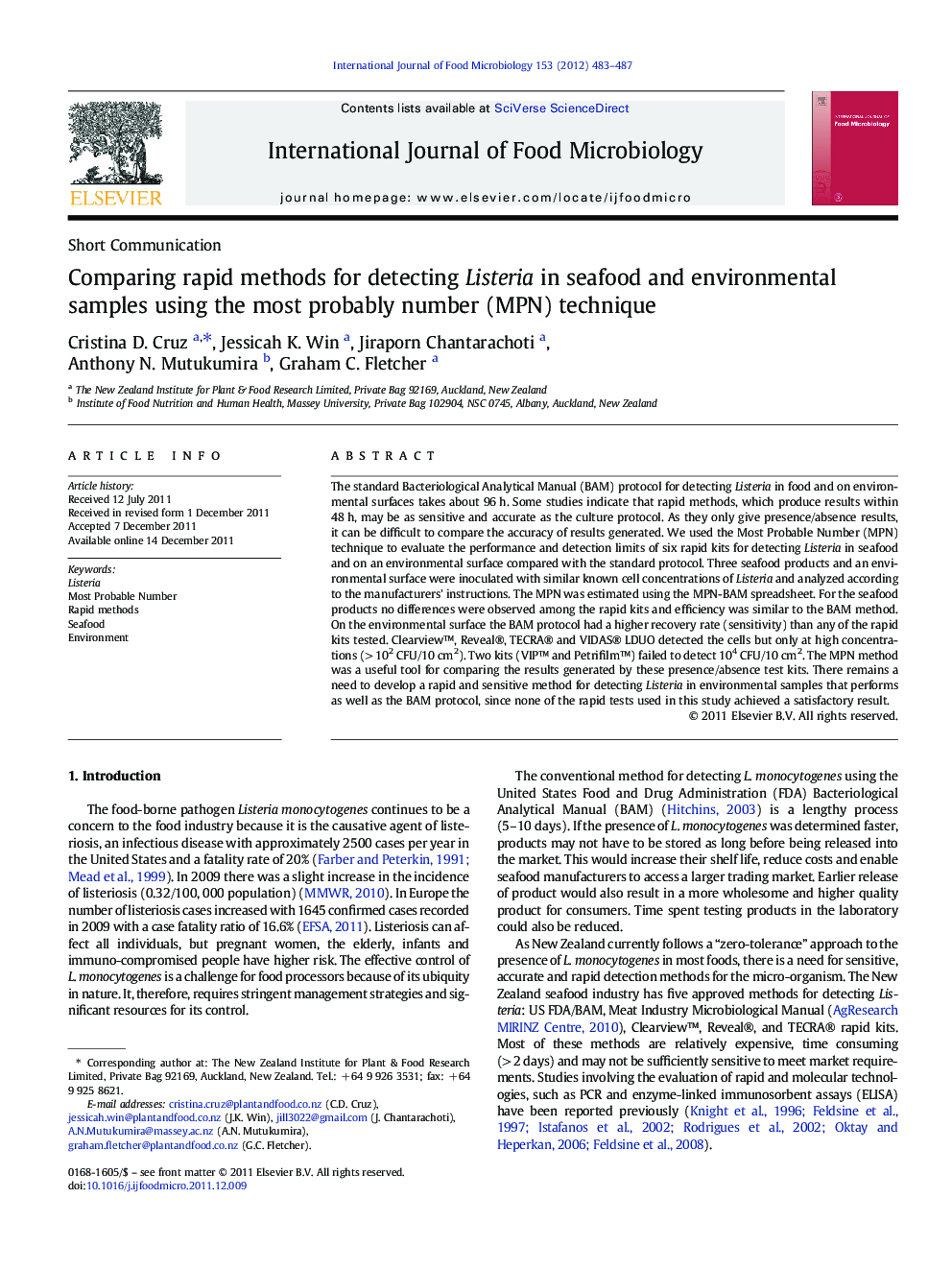| کد مقاله | کد نشریه | سال انتشار | مقاله انگلیسی | نسخه تمام متن |
|---|---|---|---|---|
| 6290346 | 1616652 | 2012 | 5 صفحه PDF | دانلود رایگان |

The standard Bacteriological Analytical Manual (BAM) protocol for detecting Listeria in food and on environmental surfaces takes about 96 h. Some studies indicate that rapid methods, which produce results within 48 h, may be as sensitive and accurate as the culture protocol. As they only give presence/absence results, it can be difficult to compare the accuracy of results generated. We used the Most Probable Number (MPN) technique to evaluate the performance and detection limits of six rapid kits for detecting Listeria in seafood and on an environmental surface compared with the standard protocol. Three seafood products and an environmental surface were inoculated with similar known cell concentrations of Listeria and analyzed according to the manufacturers' instructions. The MPN was estimated using the MPN-BAM spreadsheet. For the seafood products no differences were observed among the rapid kits and efficiency was similar to the BAM method. On the environmental surface the BAM protocol had a higher recovery rate (sensitivity) than any of the rapid kits tested. Clearviewâ¢, Reveal®, TECRA® and VIDAS® LDUO detected the cells but only at high concentrations (> 102 CFU/10 cm2). Two kits (VIP⢠and Petrifilmâ¢) failed to detect 104 CFU/10 cm2. The MPN method was a useful tool for comparing the results generated by these presence/absence test kits. There remains a need to develop a rapid and sensitive method for detecting Listeria in environmental samples that performs as well as the BAM protocol, since none of the rapid tests used in this study achieved a satisfactory result.
⺠The Most Probable Number method can be a useful tool to evaluate the detection performance of rapid kits. ⺠Rapid kits have similar performance to official BAM method for detection of Listeria in seafood substrates. ⺠Rapid kits did not perform as the official BAM method for detection of Listeria on the conveyor belt surface. ⺠Some rapid kits failed to detect Listeria the conveyor belt surface when BAM method detected 104 CFU.
Journal: International Journal of Food Microbiology - Volume 153, Issue 3, 15 February 2012, Pages 483-487